The Complete In-Depth Greco-Roman Olympic Trials Breakdown
The Complete In-Depth Greco-Roman Olympic Trials Breakdown
Greco guru Tim Hands goes in-depth to break down every Greco-Roman weight class at the Olympic Trials.

A tale of two tournaments it will be for Greco-Roman at the 2024 US Olympic Team Trials this coming weekend in State College, Pennsylvania. For three men, their victories will incite immediate and passionate celebration. Jubilance may still ensue for the champions from three other weight categories, though their respective triumphs will not mean an automatic ticket to the Paris Olympics in just over three months.
Instead, the afterglow of their achievements sometime on Saturday night may cease to last as long as it shall for their three similarly victorious contemporaries. That is because this particular trio of athletes will be accepting a most urgent and daunting assignment — to go qualify the weights early next month in Istanbul.
The situation is well understood: the United States locked down 87, 97, and 130 kilograms for Paris on February 28 in Acapulco – but 60, 67, and 77 remain unsecured. Those who emerge from the three upper-weight brackets can rest a little easier once arriving home, whereas the champs from the three unqualified weight classes will have to refocus and restart in relatively short order.
None of this is to suggest that there is a fog hovering above the landscape in the three lightest weight divisions. Quite the contrary. 60 kilograms is always an electrifying bracket, 67 is immensely competitive, and 77 is home to several of the most capable all-around wrestlers in the country. It will be these three brackets that are responsible for generating the most excitement on the Greco side of the things.
However, the most compelling weight to watch this week is 87 kilograms. And perhaps with some distance.
87 kg: Nowhere to Hide
BYE TO THE BEST-OF-THREE FINAL: Spencer Woods (Army/WCAP)
Tentative Seeds
1. Mahmoud Sebie (NYAC) – ‘16 Olympian
2. Rich Carlson (Minnesota Storm) – Two-time National Team
3. Zac Braunagel (IRTC) – ‘23 World Team, ‘19 Junior World Team
4. John Stefanowicz (Navy WC) – ‘20 Olympian, ‘19 World Team
5. Timothy Young (Army/WCAP) – ‘22 Final X runner-up
6. Ben Provisor (NYAC/Dubuque RTC) – Two-time Olympian, multi-time World Team
7. Payton Jacobson (Sunkist/NTS) – ‘23 U23 World Team, ‘22 U20 World Team
8. Fritz Schierl (Minnesota Storm) – ‘21 World Team Trials runner-up
9. Ryan Epps (Army/WCAP) – ‘23 World Team Trials Champion, ‘21 World Team Trials runner-up, ‘21 National runner-up
USA Wrestling on Monday released what they call the “pre-seeds” for each bracket at the 2024 US Olympic Team Trials. For some weight classes, this matters, if only slightly. When it comes to 87 kilograms in Greco-Roman, seeding is, in a word, inconsequential.
Three-time National Champion Spencer Woods (Army/WCAP) qualified 87 kg in February after defeating terrific Cuban Daniel Gregorich Hechavarria. As such, Woods – who has developed into a fearsome upper-weight athlete – enjoys a bye to the best-of-three final. This means that he has the luxury of bypassing what is a seriously condensed challenge bracket. Every wrestler in every weight category in the tournament would certainly love to have a bye to the finals. But for 87 kg in 2024, it is an even more important advantage given the level of competition.
How deep is this bracket? Deep enough that two-time Olympian/multi-time World Team member Ben Provisor (NYAC) is, at least preliminarily, seeded sixth.
The top seed belongs to former Egyptian Olympian Mahmoud Sebie (NYAC), who is in his first year of eligibility to compete in American domestic selection tournaments. Sebie, who prior to this season had ventured into MMA before returning to wrestling for this Olympic push, placed second to Woods at the December Nationals and fifth at the Grand Prix Zagreb Open a month later. The question hanging over Sebie’s head currently has nothing to do with his skill set. He is more polished than most of the field from a technical perspective and his work from par terre top is excellent. But can he survive consecutive grueling matches while operating in a weight class that is prone to delivering bruising slugfests? The Nationals offered a decent litmus test in this regard but that event is not the same as this one. The stakes are higher and the scores will be tighter. The intensity will be through the roof, as well. 87 kilograms in a normal tournament is already a difficult proposition on these shores. 87 at the US Olympic Trials is an altogether different scenario – especially when taking into account who else is on the top side of the bracket. If Sebie can gather steam and adequately recover between matches, then he is, of course, a realistic threat to take on Woods come Saturday evening. But doing so will likely require the most complete and arduous effort of his career thus far.
Rich Carlson (Minnesota Storm) went “all-in” for this season by putting his job occupation on hold and hurling himself into full-time training. Carlson for years has performed towards the top of his field (at either 82 or 87 kg) but would also encounter stops and starts on account of his duties in the Minnesota National Guard. He has been a steady presence during this campaign. He has trained overseas, as well. A hardcore pummeler but with explosiveness to spare, #2 seed Carlson stands as a frightful obstacle. He does not do the waltz the same way others like to. His contact is almost always purposeful and he is quite proficient when it comes to setting traps with his feet. It is not discussed enough, but foot placement and the recognition of when an athlete steps too far inside or out is how scoring gets done. Carlson can score, but he can just as well wade through the sludge to get the job done. Both approaches are necessary in order to win this tournament.
For reasons which are difficult to discern, returning World Team member Zac Braunagel (IRTC) has not been at the forefront of conversations lately among interested parties. Last season, Braunagel’s only domestic losses came at the hands of Alan Vera (NYAC) – who is now up at 97, and who was eventually defeated by Braunagel at Final X: Newark. At the December Nationals, the Illinois product took a close loss to Woods in the semifinal and was downed by Carlson on the bracket’s backside. Perhaps these match results have been overemphasized in the time since. Mistake. Braunagel forces opponents to operate at a higher tempo than is the norm at 87, slings arm drags like a ninja and pursues positions in chains that are reminiscent of lightweights from the Asian continent. If Braunagel is in any way being overlooked by the opposition, it will be at their own peril.
A question or two follows Sebie. The same can be said of ‘20 Olympic Team member John Stefanowicz (Navy WC), but for a very different reason. Stefanowicz’s stamina is not up for debate. What might be is his sharpness. His season began with an impressively clutch Military World bronze (November), which was followed by an otherwise solid showing at the Nationals. But the issue for Stefanowicz, purportedly, is that he has not been able to get time on target with consistent training partners. In another weight class, particularly a lighter one, that would be a severely problematic issue. As it were, Stefanowicz is quite adept at finding his place in the pocket and bulldogging his way into position. His body is synced for it. Par terre, as always, is the equalizer, so a dull blade in that sense could be exposed. But there is something to be said for having already scaled the mountaintop at this event, which Stefanowicz has. And only he and the man below share that distinction for this weight class.
It seems as though people are filling shovels so as to begin pouring dirt on Provisor’s time as a top competitor, this despite him placing second at both the US Open and World Trials challenge tournament last season. This thought, and ones like it, are premature. Provisor exited the Tokyo quad by trying out 82 kg. It worked out well for him in the form of World Team appearances in ‘21 and ‘22. ‘23 saw Woods edge “Big Ben” in the Open final before Ryan Epps (Army/WCAP) did the same in the Trials. Sebie then decisioned Provisor in the December Nationals. That has been it. Dismiss those results. Whether or not 82 was a good fit for Provisor, it is highly likely that 87 fits even better. This is the weight class in which Provisor has experienced his most success. Secondly, his condition in December was a step or two below standard. That should not be a problem this weekend. Most important is this directive: Provisor can turn everyone in the bracket, and not everyone can turn him. Combine that with his wealth of experience, and it becomes much easier to picture Provisor squaring off against Woods primetime on Saturday.
87 is not known for its explosiveness and has needed a shot in the arm. Enter Timothy Young (Army/WCAP). If Provisor is being overlooked, then Young might as well be lying prone in the shadows. A Final X runner-up in ‘22, Young burst onto the scene only a short time prior and began wowing observers with his ability to swim into throwing positions and scramble for scores that are rather uncommon for men his size. Better still is his competitiveness. Young has it in him to scratch and claw, which he has had to do often, and the most glaring example of his toughness was witnessed at the Farrell Memorial in November, when he defeated both Carlson and Epps to qualify for this tournament. Young faltered a bit at the Nationals, but so too did many other top athletes. Immaterial. Friday for now is what matters. He will have to work against Stefanowicz, and if that winds up in his favor then Sebie is next. Young has an expansive enough toolbox to potentially get past both.
To whom does Epps take a backseat? A reasonable answer would be “no one”. In the tradition of great Minnesotan Greco-Roman wrestlers, Epps is the type who, overall, does not lose matches but simply runs out of time. Not a man in this bracket can outwork him, even if they think they can, and it is possible that Epps is the strongest athlete in the weight class. He also sports a terrific resume. Last year, he came back following Army basic training to win the Trials challenge tournament and was later the runner-up to Woods at Final X; in ‘21, his first full season, he was both a National and Trials runner-up. Again, like Young and Provisor, Epps is not walking into State College followed by all sorts of exclamatory expectations. But those who watch closely this style of wrestling, and hold a firm grasp of the tight margins present in this weight class, recognize how much of a threat Epps really is this coming weekend.
Momentum can be a legitimate asset. If it is, Fritz Schierl (Minnesota Storm) is your man. Schierl emerged from the Last Chance Qualifier two weeks ago by defeating both teammate Lukas Poloncic and Arian Khosravy (LAWC) in one-sided fashion; he then survived to garner a 1-1 criteria nod over ‘21 U23 World Team member Tommy Brackett (NYAC), and closed out with a stunning and explosive two-move VSU at the expense of ‘18 Junior World silver Andrew Berreyesa (NYAC). That is one tough string of opponents, thus rendering Schierl duly worthy of his Olympic Trials eligibility. And we have seen this before, including the last quad. In ‘21, Jesse Porter (77 kg, NYAC) placed second at Last Chance and went on to win the Olympic Trials. Braxton Amos (97 kg, Sunkist/Wisconsin RTC) won his bracket at Last Chance and advanced to the Trials final opposite G’Angelo Hancock. That is what momentum can do. The other part to all of this is that Schierl would actually be considered a strong candidate even if he had qualified in the fall. Once a Trials finalist at 77 kg, Schierl has operated at or near the top for several years. One reason why is scoring. Schierl is much more offensively-minded than the majority of the competitors in this division, likening him to Young (who Schierl in fact decisioned back in December). Points are at a premium when 87 kg is the topic. Passivities and step-outs represent the most common scoring methods. Schierl can play that game if he has to, but he can also convert multi-point attacks at a higher frequency than is the norm. You can call him a “sleeper” if you prefer and that’s fine. Regardless of how you see Schierl’s candidacy, recognize that points are what win matches and those who take risks to earn them are usually rewarded.
One athlete beholden to an increasing groundswell of support, and confidence in his chances, is young Mr. Payton Jacobson (Sunkist/NMU), who is up at 87 after originally establishing himself in the 77 kg class. Jacobson qualified for the Trials after winning the Bill Farrell Memorial in November and advanced to the final of the Nationals’ mini bracket a month later. All of this occurred at 77. Word had begun to swirl early in the season that Jacobson was eyeing 87 but it was not until Thor Masters this past March when he made the climb. There were thoughts previously that he might be a touch short for the category. These ruminations were put to rest after the tournament. In Demark, Jacobson faced three stout foreigners and more than held his own. His last match at the event was a 5-3 decision loss to recent U23 World Champion Istvan Takacs of Hungary, who despite sitting #2 on his nation’s depth chart is clearly one of the best upper-weight competitors in the sport. Jacobson tested Takacs in ways that the latter did not expect as the Hungarian was visibly frustrated by Jacobson’s penchant for pushing a solid pace as well as due to his adherence to disciplined positioning. This is one of the key items Jacobson brings to the table. Similar to Provisor (who he may have to face), the NMU wrestler is difficult to move off of his spot unless it is doing. He can drive into tie-ups brandishing a ton of physicality without abandoning his footing or failing to pay attention to where his hands are. Jacobson is a smooth but intense athlete whose competitiveness is actually his best quality. He was a can’t-miss prospect the moment he committed to Northern Michigan. And now, just three years later, he is not only in the Olympic Trials, he is as much in the mix to go to Paris as anyone else in his bracket.
Weight Class Overviews
60 kg
Tentative Seeds
1. Ildar Hafizov (Army/WCAP)
2. Dalton Roberts (Army/WCAP)
3. Hayden Tuma (NYAC)
4. Max Black (NMU/NTS)
5. Randon Miranda (NYAC)
6. Sammy Jones (Sunkist/CTT)
7. Dylan Gregerson (Minnesota Storm)
8. Taylor LaMont (Minnesota Storm)
9. Phillip Moomey (TMWC/Spartan Combat RTC)
10. Brady Koontz (TMWC/Dubuque RTC)
11. Dalton Duffield (Army/WCAP)
12. Billy Sullivan (Army/WCAP)
13. Sidney Flores (Air Force)
Ildar Hafizov (Army/WCAP) has occupied the driver’s seat of this weight category in five of the past seven years. During that time, he has taken domestic losses to only three opponents: Xavier Johnson, who competes at 67; Mike Fuenffinger; and, of course, two-time World rep Dalton Roberts (Army/WCAP), with whom Hafizov has been engaged in the country’s most storied rivalry. As you can see from the seeds below, Hafizov and Roberts sit on opposite sides of the bracket, which potentially sets up their fifth best-of-three series since ‘18. But it will not be easy for either party to make yet another showdown between them materialize.
The most explosive wrestler – of any weight, perhaps, in the entire tournament – is #3 seed Hayden Tuma (NYAC). Tuma ventured down to 60 kg for the Nationals in December and was challenged only by Sammy Jones (Sunkist/CTT) prior to defaulting out of the final (where he would have been greeted by Hafizov). Jones himself is on the bottom side of the chart, and everyone is familiar with the throwing ability for which “Wildman Sam” is widely recognized. Also on Roberts’ half is Dylan Gregerson (Minnesota Storm), a very strong and dedicated athlete who has patiently paid his dues. He will have to face 55 kg World Team member Brady Koontz (TMWC/Dubuque RTC) in what could be a battle of gutwrenches.
On the bracket’s top half, Hafizov will do business in the quarterfinal with whoever emerges between Phillip Moomey (TMWC/Spartan Combat RTC) and two-time National Team member Taylor LaMont (Minnesota Storm). Another pairing on this side that is guaranteed to draw attention would involve Randon Miranda (NYAC) and ultra-competitive Max Black (NMU/NTS). Miranda and Black have their own rivalry. It’s not on the level of Hafizov/Roberts just yet, but it is gaining steam. Miranda first has to deal with Billy Sullivan (Army/WCAP), who is most certainly talented despite being a touch undersized for this category. Black has Sidney Flores (Air Force). Flores showed promise in spaces at Armed Forces but will need to be prepared for the arsenal Black has at his disposal, which could be asking a lot.
Everyone in the arena who turns their heads to catch some of the Greco matches will want to see speed and technical refinement. That is what 60 kilograms will have to offer. It always does.
67 kg
Tentative Seeds
1. Alex Sancho (Army/WCAP)
2. Peyton Omania (OCRTC)
3. Robert Perez III (Sunkist)
4. David Stepanyan (NYAC/NTS)
5. Patrick Smith (Minnesota Storm)
6. Justus Scott (Army/WCAP)
7. Ellis Coleman (Army/WCAP)
8. Xavier Johnson (Army/WCAP)
9. Duncan Nelson (OTC)
10. Jamel Johnson (Marines)
11. Pete Ogunsanya (Army/WCAP)
As explored ad nauseum, 87 kg is, objectively, the most competitive and compressed weight category at these Olympic Trials. 60 has its fair share of top-tier talents, as we just learned. But 67 edges 60 for the title of second-best this time around.
It begins with ‘20 Olympian Alex Sancho (Army/WCAP). Owner of a picturesque hybrid straddle lift that can quickly pile up points, Sancho’s par terre skill set remains a stressful proposition for antagonists. But, should that lift of his be defended, Sancho has shown time and again that he knows how to be clutch on-the-feet when the walls are closing in. That, too, is a potent card to have up one’s sleeve.
The aforementioned Xavier Johnson is scheduled to square off against ‘16 Olympian Jesse Thielke (Army/WCAP), which will be one of the event’s most-watched matches in the opening round. Johnson is superb from par terre but can also unleash throws and lifts when standing that generate booming impacts. Sancho will take on the winner of this match in the quarters to provide the audience with another demonstration of Army’s stanglehold on Greco-Roman in the US.
Four-time World Teamer Patrick Smith (Minnesota Storm), who dropped to 67 for this season, will have to get past ‘22 Open runner-up Pete Ogunsanya (West Point WC). A tough task. Ogunsanya even in limited action has impressed observers with his mechanics and preference for risky scoring attempts, not to mention his overall wrestling IQ. However, Smith can deliver a pace that neutralizes most, if not all, potential vulnerabilities. He also tends to score in increments, resulting in opponents becoming equally frustrated and worn down. Whoever survives that possible barnburner will tangle with David Stepanyan (NYAC/NTS), an athlete who is beginning to fully blossom on the Senior level. Stepanyan – both a US Open and Trials runner-up in ‘21 at 63 – placed fourth at the December Nationals where he handed Smith a close decision loss. Stepanyan is versatile and athletic, as well as keen to seize on windows of opportunity when on-the-feet that can alter the complexion of matches in a hurry.
The bottom half of the bracket is led by ‘21 World Team member Peyton Omania (OCRTC), the #2 seed, and Final X runner-up Robert Perez III (Sunkist), who is in the third spot. Both have byes to the quarterfinal round. For Omania, the objective is offense in the form of risky attacks from the feet. Then again, his CYC headlock is actually a high-percentage maneuver and has been responsible for ending plenty of matches early. Perez operates differently. He is an old-school grinder who relies on position and instinct, which is why at still such a young age he has skyrocketed up the ladder. A front headlock from par terre top is his preference and the hold is strong enough to have exposed ‘22 World Champ Sebastian Nad (SRB) last year in Denmark.
If the seeding holds as presently constituted, ‘23 National champion Justus Scott (Army/WCAP) will take on Jamel Johnson (Marines). This match-up is not complicated and fails to necessitate a pronounced hypothesis. Scott is a charged-up, physical wrestler who can score in a variety of ways, is just as apt to deliver pummel-happy beatdowns, and is only just starting to scratch the surface of his abilities. Meanwhile, Johnson has become a part-timer who is much busier these days with his career as an officer in the Marine Corps and coaching his kids than he is training for competition.
The last match on the list as far as the first round is concerned features two men with compelling stories – ‘12 Olympian/multi-time World Team member Ellis Coleman (Army/WCAP) and Duncan Nelson (OTC). Nelson got himself into the Trials via “Last Chance” and worked very hard to do so. He has long been underrated. Nelson is strong and skilled, and his vulnerabilities are not unique when compared to other Americans. That said, he still has room to grow. Coleman returned to competition in February following two years on the shelf. His first event back was Armed Forces, but it was a trip last month to Croatia that provided a much more suitable reset. Coleman, now on the other side of 30, was once considered pound-for-pound the best Greco-Roman wrestler in the country. This was not long ago. But rust is rust, and rust is often more of a factor than age when discussing athletes like Coleman at big events.
77 kg
Tentative Seeds
1. Kamal Bey (Army/WCAP)
2. Benji Peak (Sunkist/NTS)
3. Aliaksandr Kikiniou (NYAC)
4. RaVaughn Perkins (NYAC)
5. Danny Braunagel (IRTC)
6. Jesse Porter (NYAC)
7. Tyler Eischens (Tar Heel WC)
8. Terrence Zaleski (Marines)
77 kilograms is home to the most popular Greco-Roman competitor in the US, Kamal Bey (Army/WCAP), who most figure will dazzle his way to the best-of-three final. He would relish the opportunity. Bey was forced to miss the Tokyo Trials due to a “whereabouts failure.” Nevertheless, Bey paid the price, came back for ‘22, made that year’s World Team, last year’s, and has by and large gone unscathed in domestic competition over the past two seasons.
His quarterfinal foe will either be Vincent Dolce of the Air Force, who qualified thanks to the Armed Forces Championships, or Terrence Zaleski (Marines). Dolce is a fine wrestler but needs more time on the scene. Zaleski is interesting here because it was at 87 where he was originally targeted. Very impressive he was back in December. At the Nationals, Zaleski had next to no time to prepare and still found a way to qualify. Aside from his cardio, he looked great. How his wares will translate at 77 compared to 87 brings about curiosity because he has not touched that weight range in a very long time.
The other quarterfinal match on the top half might be the bracket’s most intriguing — the stately RaVaughn Perkins (NYAC) versus Danny Braunagel (IRTC). Perkins possesses a vast array of weapons, is the best pummeler in the weight class, and knows very well how and when to make proper adjustments. Those are his strengths. Braunagel’s strengths are that he is a) a fantastic wrestler, in totality; and b) is an expert at dragging opponents into deep water and watching them drown. His twin brother, Zac, is known for this, as well, but Danny wrestles with even more ferocity. So much so that it comes off as a personal mission for him to break people. Perkins has seen it all, of course, and then some. How he contends with the pace that Braunagel brings to bear will go a long way towards determining the outcome.
At the last Olympic Trials, Benji Peak (Sunkist/NTS) put on such an adrenalizing display of workmanship that he became one the tournament’s most talked-about stars and he did not even advance to the best-of-three. Peak, who formerly competed at 67 kg, needed “Last Chance” to get in, endured a concussion, and proceeded to stomp a path to the challenge final before ultimately ending up victorious in the third-place/National Team match. Plenty has changed in the time since. Peak has now experienced what it is like to be on a World Team (‘22) and no longer can he catch people by surprise. But he does not need to. “Mr. Fantastic” is firmly established by now, and his 77 kg domestic debut in November was an impressive one. Bey seized on a par terre miscue early in their final to take the crown, thus ending the issue before the contest could develop into something more substantive. Maybe that happens on Saturday.
‘23 U23 World Team member Tyler Eischens (Tar Heel WC) can spoil those plans. And it is not just because Eischens survived “Last Chance” two weeks ago. The Minnesotan is in pristine physical condition and is as legit a Greco athlete as anyone else in the weight division, even with his detour onto the collegiate folkstyle circuit. Eischens could pose problems for Peak by forcing transitional scoring opportunities and simply by defending the lock when on bottom. This is a serious match-up and possibly a very stiff test for Peak, who prefers a more authentic iteration of the sport.
The same can be said of ‘09 World bronze (for BLR) Aliaksandr Kikiniou (NYAC). An obvious declaration. Kikiniou – who was edged by Peak in December – performed brilliantly in spots last season by finishing second to Bey at both the Nationals and Final X. There is always talk about his age (mid-40’s), but age is not why he has lost matches as a US citizen. Kikiniou’s problem is that he has “wrestled” far too much in his brief time as an American domestic competitor. He has aggressively pursued scores when standing which, while admirable, have diminished his opportunities to work from top par terre – a phase of the style at which he is expert and certainly more skilled than most everyone else he has faced the past season. Clinging to the wrists, keeping active enough to ward off passivities, and taking advantage from par terre – those are his keys to victory.
Yet he will be working against ‘20 Olympic Team/’21 World Team member Jesse Porter (NYAC), who very much marches to the beat of his own drum. Porter’s approach and timing are unconventional and therefore difficult to manage. Opponents struggle to tap into his rhythm. Then there are the dynamics. Porter lulls people to sleep in the ties – but in an instant can explode like dynamite into a throwing chance. People counted Porter out the last time this tournament was held and that proved to be a mistake. Just as it also would be this year.
97 kg
BYE TO BEST-OF-THREE FINAL: Alan Vera (NYAC)
Vera’s decision to jump up from 87 to 97 was shrewd and timely. For starters, the much more manageable weight cut has allowed him to find an extra gear in second periods, a gear that was previously unattainable. Secondly, his body is just simply made for 97. Vera was an enormous 87, but he is no less imposing up a weight class. It might be a little harder for him to express the same type of dynamism that was once commonplace in his matches at 87, but thus far his confidence in attempting lifts and other multi-point attacks has hardly waned.
Third, and most importantly, is how his style translates to his former weight class as well as to his new one. Vera, now 33, would have remained a top contender at 87 if he had chosen to do so. But with that weight class expanding for the Olympic Year and filling up with young, potent brawlers who constantly step on the gas – along with accounting for his polished technical style – the juice was not worth the squeeze. Vera is much better suited at this stage of his career to do his bidding in a category where his own athletic gifts will make more of a difference, both domestically and abroad.
Of course, none of this means that he won’t be in for a dogfight in State College.
Joe Rau (TMWC) is wearing the #1 seed and it is he who has had the most match time with Vera of anyone in this bracket. Rau’s Greco comeback in ‘23 began in dominant fashion with a US Open title, Pan-Am Championships gold, a trip to the World Championships, and Bill Farrell gold. He was also on the cusp of earning his first victory over Vera back in the finals of the December Nationals until a late passivity/par terre chance saw Vera snare the lead and, eventually, the tournament crown. Rau then spent most of the winter training overseas, a trek that culminated with a bronze from the always-tough Nikola Petrov Memorial in Bulgaria. The idea is that a Vera/Rau final would make for thrilling theater, particularly because they have not yet engaged one another in a best-of-three, though that might be a tall order based on the composition of the challenge bracket.
Rau will start off against “Last Chance” winner and former NMU athlete Brandon Marshall (Big Game WC). Marshall cannot be written off in this one. He pressed Rau in December, falling via close decision and is generally a strong and experienced competitor. Plus, he does a solid job of keeping things simple. Marshall will open up occasionally, but rarely over-extends for attempts and his defense from par terre is, at minimum, baseline. ‘19 U23 World Team member/US Open runner-up David Tate Orndorff (TMWC/Ohio RTC) had a fine performance at the December qualifier, but so did his opening-round antagonist Mike Altomer (Curby 3-Style). Orndorff is multi-dimensional and has more than looked the part at 97. His physical gifts have come to life a bit more in this division. Altomer – who made both the U20 and U23 World rosters in ‘23 – is a different sort of animal. Short, super-stocky, and an aggressive thrower, his methods will produce an interesting contrast in styles. Points from the feet are usually hard to come by in upper-weight matches but perhaps not in this one.
There is no reason to be swayed by Braxton Amos’ (Sunkist/Wisconsin RTC) lack of activity in recent months, for the ‘21 U20 World bronze needed time to recover from injury until stepping back on the mat last month at Thor Masters. That event showed why Amos commands the kind of respect he does. Foreigners wrestle differently, and yet Amos, as he has shown in the past, did not hesitate to confidently work his customized brand of tactics. He went 1-2 in Denmark but was within striking distance in both decision losses. That trip was nothing more than a test drive for Amos and he certainly passed. He is also familiar with the territory coming up this weekend, having placed second in the Tokyo Trials to G’Angelo Hancock. He caught fire three years ago, and that is possible once again in ‘24.
It will be up to Diante Cooper (Air Force) to halt the hype train. Cooper is also a holdover from the ‘20 Olympic Trials but has competed only sparsely since. He was starting to gain some ground towards the end of the Tokyo quad, and that disruption set him back. A score early in his match with Amos could break the ice, and from there an ardent focus on defense may be the most reasonable strategy.
As recently as a year ago, a match between multi-time age group World Teamer Nick Boykin (Sunkist) and George Sikes (NYAC/NTS) would have been dismissed as a shoo-in victory for the former. Not anymore. Sikes clipped Boykin at the Bill Farrell Memorial en-route to qualifying for the Trials. It is to date Sikes’ most significant domestic win. Boykin has more weapons at his disposal. Undoubtedly. In addition, he is a more fluid wrestler and holds an advantage in experience under the bright lights. But Sikes is a bulldog and knows how to keep matches close, especially on US soil. He will have to do that here as just one string of points for Boykin could compel a halt to the proceedings.
130 kg
BYE TO THE BEST-OF-THREE FINAL: Cohlton Schultz (Sunkist)
At only 23, Schultz has amassed an exhaustive list of accomplishments, from his three age-group World medals and run to the NCAA Division I National final, to having made three consecutive Senior World Teams and qualifying this weight class on behalf of the US for Paris. One more box to check would be actually earning the right to go to Paris, a feat of which he is certainly capable.
The talk with regards to Schultz currently centers around ‘18 World silver Adam Coon (TMWC/Cliff Keen WC). They are, until things change (which could be this weekend), closely associated with one another. This is what happens when two athletes seem to perennially find themselves on the same collision course. Coon handed Schultz his first four domestic losses on the Senior level (via series victories at Final X: Lincoln and the ‘20 Olympic Trials, respectively), and thus it was by Coon that Schultz had been measured – which stopped in April of last year, when Schultz downed Coon in emphatic fashion at the US Open. Schultz would go on to defeat Coon once again, this time in two straight at Final X: Newark, and history repeated itself at the December Nationals.
Given these recent results, it is natural to wonder if Schultz has surged right past Coon and that their rivalry is now nothing more than the byproduct of Coon simply eradicating every name in the bracket with the exception of one guy. That is how it has looked to outsiders. Such thinking is understandable. However, Coon does not see it this way, and nor should he. Coon has not lost to Schultz due to getting his doors blown off, aside from Vegas ‘23. He has mainly lost to Schultz because of dodgy positioning, the abandonment of workable tie-ups, and a failure to score from par terre. These are tactical issues that can be corrected. With Coon having spent substantial time overseas during the winter, one would suppose that he has appropriately addressed them.
Jacob Mitchell (Unattached) and Donny Longendyke (Minnesota Storm) – who together were responsible for one the best matches at the ‘20ne Olympic Trials – will run it back in the quarterfinals. Mitchell walked away from competition shortly after the previous quad but came back for “Last Chance” two weeks ago and was, basically, back to his old self. Longendyke has not diminished as a steady presence and is still one of the more underrated wrestlers in the sport of any weight class.
Only three competitors occupy the bottom side of the bracket: #2 seed Courtney Denzel Freeman (Marines), Jeremiah Imonode (Army/WCAP), and #3 seed/’22 U20 World bronze Aden Attao (Beaver Dam RTC). Freeman has been one of the best stories of the season. Although his dalliances with MMA and grappling have caused consternation for some in the program, the bottom line is that Freeman has improved at a severe rate and is fast developing into a potent scorer in a weight class where such a thing is exceedingly rare. He also found ways to score on Coon that not many would even dare explore, but he will first have to deal with the winner between Attao and Imonode for that conversation to pick back up again.
Imonode was at one point a promising heavyweight, and could still be one, but he is not a full-time competitor. Attao is. Attao is also a well-schooled and instinctive scorer with boundless potential in this division. He reminds some of ‘16 Olympian Robby Smith, who at heavyweight displayed the same love for classical throws and scoring sequences that are witnessed most often in lighter weight categories. Attao brings a freshness to heavyweight in the United States, and a match between him and Freeman would, very likely, be the most exciting one from this entire bracket.
Related Content
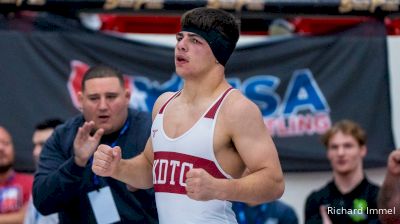 Which College 'Won' The US Open U20 Tournament?
Which College 'Won' The US Open U20 Tournament?May 1, 2024
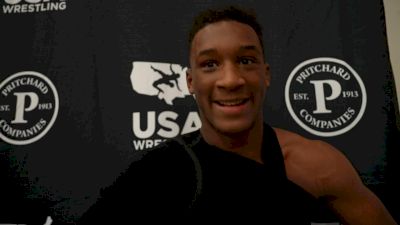 Dreshaun Ross Expected Tough Matches At The U17 World Team Trials
Dreshaun Ross Expected Tough Matches At The U17 World Team TrialsMay 1, 2024
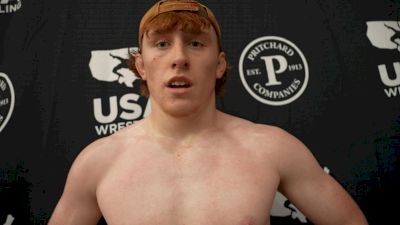 Michael Mocco Got A 'Good Battle' At The U17 Trials Finals
Michael Mocco Got A 'Good Battle' At The U17 Trials FinalsMay 1, 2024
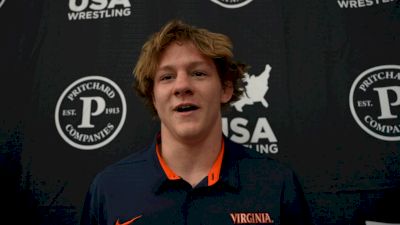 Little Adjustments Helped Emmitt Sherlock Make Both Greco & Freestyle U17 World Teams
Little Adjustments Helped Emmitt Sherlock Make Both Greco & Freestyle U17 World TeamsMay 1, 2024
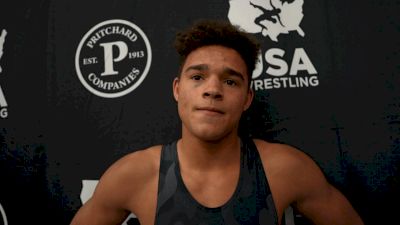 Pushing The Pace Was Key To Melvin Miller Making The U17 World Team
Pushing The Pace Was Key To Melvin Miller Making The U17 World TeamMay 1, 2024
 Jordyn Raney On Challenge Of Battling His Brother At U17s
Jordyn Raney On Challenge Of Battling His Brother At U17sMay 1, 2024
 Nathaniel Askew Trusted His Coaches And Stuck To The Gamepan At The U17 World Team Trials
Nathaniel Askew Trusted His Coaches And Stuck To The Gamepan At The U17 World Team TrialsMay 1, 2024
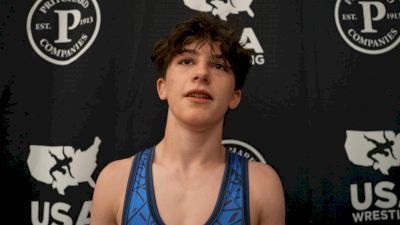 In His Third Attempt, Keanu Dillard Makes The U17 Men's Freestyle World Team
In His Third Attempt, Keanu Dillard Makes The U17 Men's Freestyle World TeamMay 1, 2024
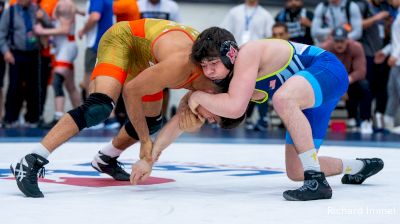 Every 2024 US Open U20 Finals Matches
Every 2024 US Open U20 Finals MatchesApr 29, 2024